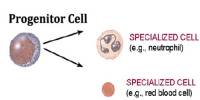Researchers have made significant progress in assuring that red blood cell substitutes or artificial blood can function safely and successfully when transfused into the bloodstream.
The goal is to make the artificial blood molecules large enough so that they don’t leak from blood vessels into tissue and produce serious cardiovascular side effects, according to a recent study led by Ohio State University researchers.
Although blood loss is typically treated by transfusing units of donated blood, when transfusions are not readily available or time is limited to screen for patient blood type compatibility (as in certain rural areas or on the battlefield), artificial blood products provide medical professionals with greater treatment flexibility.
Previous generations of these blood substitutes frequently resulted in various negative health outcomes in human studies, with individuals experiencing symptoms ranging from blood vessel narrowing and high blood pressure to tissue harm.
The researchers discovered in this study that a specific sized fraction of red blood cell substitute can provide a variety of health benefits and can reduce the risk of cardiovascular side effects if its components are the proper size.
By performing this study, we demonstrated that we can improve upon what currently exists and, hopefully, be able to move our research forward and translate those materials into the clinic.
Alisyn Greenfield
“We found that as you make the red blood cell substitute molecules bigger, you have fewer side effects,” said Alisyn Greenfield, lead author of the study and a Ph.D. student in chemical and biomolecular engineering at Ohio State. “There’s even a particular size range that has better benefits when it comes to the kind of cardiovascular effects that were seen with with previous generations of this material.”
Their findings were published in the journal Biomacromolecules.
The researchers tested a red blood cell substitute called polymerized human hemoglobin PolyhHb. Although previous commercial versions were tested in clinical settings, they were not approved by the FDA due to their numerous negative effects.
The team focused on defining a target therapeutic size of PolyhHb by synthesizing material in four different-sized brackets and investigating the cardiovascular response in guinea pig models to discover a better option. The largest-sized brackets did not leave the blood arteries or force the blood vessels to narrow, resulting in elevated blood pressure.
The antioxidant state of guinea pigs is more similar to humans than other rodents, according to research senior author Andre Palmer, professor of chemical and biochemical engineering at Ohio State.
While these red blood cell substitutes are not intended to completely replace blood, this study demonstrates their potential. According to Palmer, if transfused into a person immediately after injury, they might be utilized to buy the person enough time to be transferred to a medical institution for a blood transfusion.
Furthermore, because blood replacements lack any surface antigens or identifiers on the outside of the red blood cell’s membrane, they can be transfused into anyone, regardless of blood type. That said, artificial blood is still a long way from commercialization.
“Even though it can be stored at room temperature for several years compared to the 42-day storage period for donated blood, artificial blood doesn’t come close to replicating the lifetime of real blood cells,” said Palmer.
A typical red blood cell circulates in the human body for around 120 days after production, whereas the materials used in contemporary blood substitutes have a half-life of roughly 24 hours after injection.
More research is needed to determine the safety and efficacy of the red blood cell substitute in clinical settings.
“By performing this study, we demonstrated that we can improve upon what currently exists and, hopefully, be able to move our research forward and translate those materials into the clinic,” said Greenfield.
















